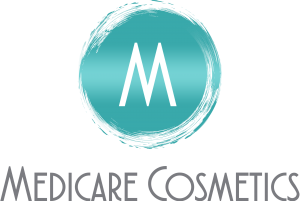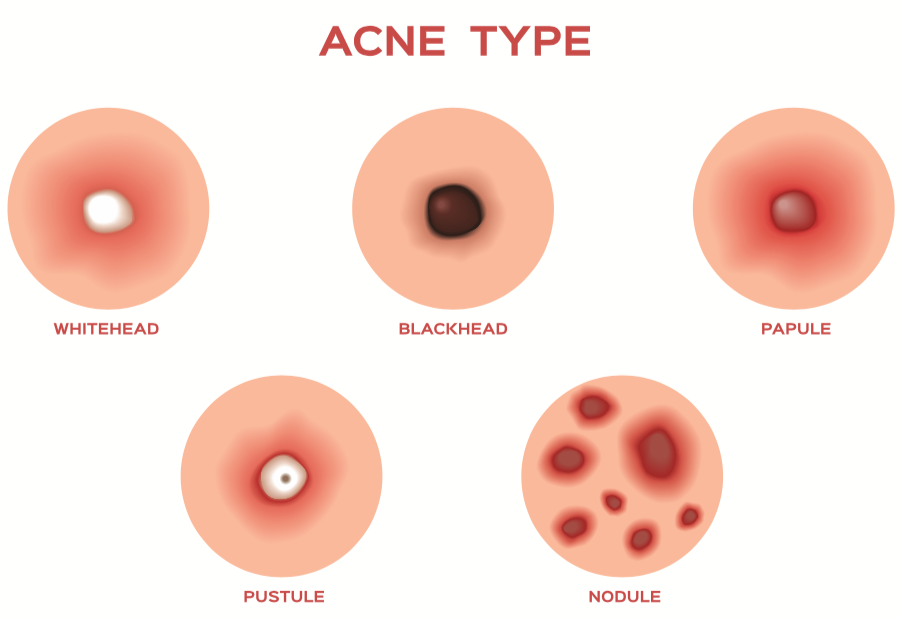It is important to understand that there are a range of different types of blemishes.
PAPULES
Papules are inflamed lesions that appear as small, pink bumps on the skin. They can often be tender to the touch and are usually the first sign that a breakout is on the way.
When a pore is blocked with dead skin cells and excess sebum, blemish-causing bacteria begin to thrive. This infection triggers an inflammatory response in the body. This is why papules are raised and slightly pink.
PUSTULES
Pustules develop from papules. As levels of bacteria rise, white blood cells are sent to the site of the blemish to fight off infection. The aftermath of this is pus, a whitish substance made up of dead white blood and sebum. Pustules are topped with pockets of yellow or white pus and will usually be painful and red at the base. They are what most people refer to when they talk about a pimple.
BLACKHEADS & WHITEHEADS
These blemishes are a hair follicle that’s clogged with excess sebum and dead skin cells. If the blockage reaches the skin’s surface, the clogged up sebum becomes oxidised by the air. It then turns black or grey in colour. Dermatologists refer to it as an open comedone, but we know it as a blackhead.
When the blockage remains beneath the skin, it is called a closed comedone or whitehead. Because oxygen cannot reach the built-up plug of sebum, oxidation cannot take place. This prevents the sebum from turning grey, allowing it to keep its natural white colour.
Both types of comedone are a non-inflammatory, so they should never be painful or swollen. But they can sometimes lead to inflammatory blemishes.
NODULES & CYSTS
Nodules occur when a hair follicle wall ruptures within the dermis. This happens when a pore is clogged at its base. Because the infection is so deep, the rupture takes place under the skin rather than at the surface. This causes damage to the follicle, which leads to excessive inflammation and tenderness. Just like pustules, nodules can be filled with pus, but you will never see a whitehead as the infection is so deep.
A cyst is when a nodule has become swollen and inflamed so severe that it damages healthy skin and destroys the hair follicle. This type of blemish is the most painful of them all and is extremely prone to scarring.
HOW DO YOU TREAT DIFFERENT TYPES OF BLEMISHES?
Blemishes are often treated with specific skincare, which does not need a prescription. Salicylic Acid chemical peels are a great treatment for mild blemishes. It can enter the hair follicle and break down clogged pores, preventing the formation of blemishes.
For severely inflamed blemishes, like nodules and cysts, prescription medication may be required. Trained professionals can offer peels and facials that penetrate the skin at a much deeper level to target under-the-skin breakouts.
Living with acne is tough. That’s why we have a full topical solution dedicated to acne and blenishes. Start your journey to clearer skin today. Our treatments for acne range from chemical peels, microneedling and IPL treatments.
Book your free skin analysis here.

